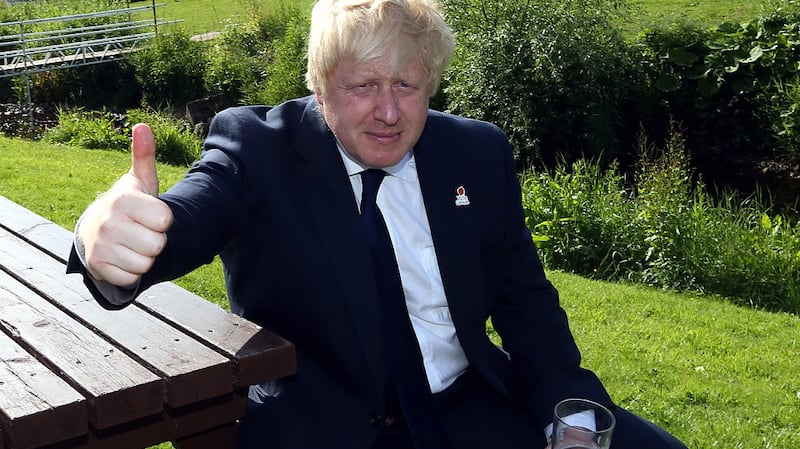Brexit negotiators are not contemplating using technology to solve the Border problem, but its use to help simplify checks between Britain and the island is a "different question", said Tánaiste Simon Coveney on Monday.
He was speaking after media reports suggested Brussels is discussing plans to put British officials – rather than EU inspectors – in charge of checking goods heading to Northern Ireland, as part of an attempt to restart stalled talks on the "backstop" plan for the Border.
EU chief negotiator Michel Barnier is reported to be looking at the option as part of a move to "de-dramatise" the Border row. It is this issue that remains the biggest obstacle to a Brexit deal at a special summit scheduled for mid-November, according to reports on Monday.
Mr Barnier said this month he is willing to consider new ways to solve the problem. This included technical checks aboard vessels or in ports outside Ireland.
But Mr Coveney said the discussions were not about using technology to solve the Border question.
“Whether technology can help east-west trade is a different question to making the checks as simple and as de-dramatised as possible. But that is a matter for the negotiating teams,” he said. The Tánaiste added that he would not give credit to every report of Brexit developments “because there are lots of different interests competing in relation to the outcomes of these negotiations”.
Mr Coveney said “we take our lead from the British prime minister. She has been clear that technology does not solve this problem just like we have been clear that it doesn’t, just like the Brexit committee in Westminster has also been clear that there is no technological solution to the Irish Border question.
“From an Irish perspective our position has been very, very clear for the last 12 months and it’s not going to change now.”
Meanwhile, British prime minister Theresa May meets the leaders of the other 27 EU member states in the Austrian city of Salzburg this week in an attempt to map a path to an eventual Brexit deal as officials work behind the scenes to resolve the Northern Ireland issue.
Mr Barnier will brief ministers of the remaining 27 member states on Tuesday on progress in the negotiations, a note prior to the meeting indicated.
“Some parts of the draft withdrawal agreement have already been agreed in principle by the UK and the EU negotiators, although nothing is agreed until everything is agreed,” it said. “There are still parts of the withdrawal agreement that require further negotiation. One of them is the issue of how to avoid a hard Border between Ireland and Northern Ireland.”
Under the proposal British officials would carry out limited checks at ports on the UK mainland to reassure Brussels that goods heading to Northern Ireland meet single-market rules. Checks could also be carried out on ferries or at factories on the mainland under “trusted trader” schemes.
Mr Barnier told British MPs this month: “We are open to discussing other backstops, so we can discuss this text, we can make changes to it.”
Brussels diplomats say Mr Barnier could drop the EU proposal for a joint EU-UK service in Northern Ireland to carry out further checks, relying instead on British officials.
At the heart of the discussions is the need to avoid any physical infrastructure to conduct customs and other checks on the Border after Brexit, a move seen as a step backwards in the Northern Ireland peace process.
Downing Street is seeking a political declaration on the future EU-UK relationship that states the Irish backstop plan will never be needed and that both sides will negotiate a free-trade area between the EU and the whole UK.
However the declaration would not be legally binding. And officials are searching for a legally operative backstop in case no free-trade area is agreed.
Britain has proposed a backstop that would keep the entire UK in a customs union with the EU for a limited period, but that has so far been rejected by Brussels.

In a tangential development Downing Street has reproved Boris Johnson following his warning that Britain is heading for a "spectacular political car-crash" if the government sticks to Mrs May's Brexit plans.
The former foreign secretary’s warning came as Mrs May gave one of her most positive forecasts yet for Britain’s future after the country’s EU departure. “I believe that our best days are ahead of us,” she told the BBC.
Asked in an interview for Panorama why she thought Brexit would be good for Britain, she replied: "It gives the United Kingdom opportunities as an independent and sovereign state to build a better future for all our people."
But Mr Johnson warned that unless Mrs May’s Chequers plan was dropped, Britain was “heading full throttle for the ditch with a total write-off of Brexit”.
Requirements for a backstop arrangement at the Border, contained in December's agreement between Mrs May and European Commission president Jean-Claude Juncker, would leave the UK a "vassal state" of the EU, warned Mr Johnson.
In his Daily Telegraph column Mr Johnson claimed that he and others had been "taken in" over the EU's fallback option, having been privately assured at the time that it would never be invoked.
But Number 10 said Mr Johnson had himself signed up to the joint report agreed by Mrs May and Mr Juncker, including the backstop provision. Moreover, he had remained in government for a further seven months afterwards. – Additional reporting The Financial Times












